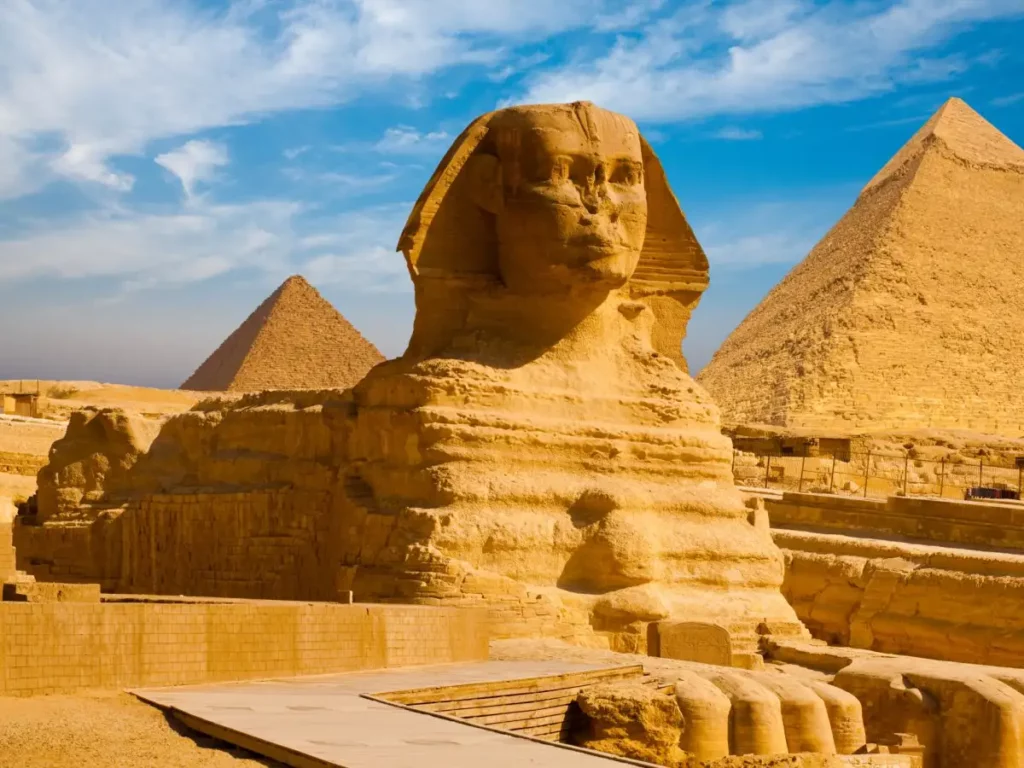
A Gateway to Esoteric Knowledge from the Sphinx.
The Sphinx has long captured the imagination of mystics, scholars, and seekers of hidden wisdom. This enigmatic figure, part-lion and part-human, serves as a powerful symbol in the occult. Rooted in ancient history and woven into esoteric traditions, the Sphinx embodies mystery, guardianship, and the path to enlightenment. But what deeper meanings does it hold? Let’s explore its symbolism and significance in the occult.
The Sphinx as a Guardian of Sacred Knowledge
In many ancient cultures, the Sphinx stands as a guardian of hidden wisdom. Most famously, the Great Sphinx of Giza watches over the pyramids, symbolizing protection and secrecy. In the occult, this idea extends further. It represents the threshold between the known and the unknown, acting as a gatekeeper to deeper spiritual understanding. Those who wish to uncover hidden truths must first answer its riddle—a metaphor for passing the tests of wisdom.
Beyond ancient Egypt, Sphinx-like figures appear in other civilizations. For example, the Greek Sphinx serves as a gatekeeper to Thebes, testing those who seek entry. Similarly, in Persian mythology, the Shirdal, a griffin-like creature, carries comparable connotations of protection and divine knowledge. This recurring motif underscores this creatures universal role as a keeper of esoteric secrets.
The Four Elements and the Sphinx’s Form
Occult traditions often view it as an embodiment of the four elements. Specifically, its features represent:
- Human head – Air (intellect and consciousness)
- Lion’s body – Fire (strength and willpower)
- Bull’s legs – Earth (stability and endurance)
- Eagle’s wings – Water (intuition and transformation)
This alignment directly connects the Sphinx to the alchemical process, emphasizing balance and mastery over the elements. Those who seek esoteric knowledge must first learn to harmonize these forces within themselves. By successfully integrating these energies, initiates progress toward the Hermetic concept of spiritual enlightenment, transcending their earthly limitations.
The Riddle and Occult Wisdom
The most famous riddle of the Sphinx comes from Greek mythology. It asks, “What walks on four legs in the morning, two in the afternoon, and three in the evening?” The answer, of course, is a human—crawling as an infant, walking upright in adulthood, and using a cane in old age. However, beyond its literal meaning, this riddle holds deeper esoteric significance. It symbolizes the three stages of spiritual evolution: initiation, enlightenment, and mastery.
The concept of riddles as a means of accessing hidden knowledge frequently appears in occult traditions. Consequently, the ability to decipher symbolic language and interpret hidden meanings becomes essential for anyone walking the mystical path. The Sphinx’s challenge, therefore, is not merely a test of intelligence but an invitation to deeper self-awareness and spiritual awakening.
The Sphinx in Hermetic and Masonic Traditions
In Hermetic teachings and Freemasonry, the Sphinx represents silent wisdom. It is often associated with the phrase “To Know, To Dare, To Will, and To Keep Silent.” These four principles guide the spiritual seeker, emphasizing the discipline required to attain true enlightenment. The Sphinx’s enigmatic nature reminds initiates that some knowledge must be earned, not merely given.
Freemasons incorporate the Sphinx into their symbolic teachings, representing the balance between strength and wisdom. Moreover, the silent nature of the Sphinx highlights the importance of discretion in esoteric knowledge. Wisdom is not meant for all but must be revealed to those prepared to receive it. This belief aligns with many occult traditions that stress knowledge should only be shared with the worthy.
The Sphinx as a Symbol of Duality and Transformation
With its blend of human and animal traits, the Sphinx represents the dual nature of existence: spirit and matter, intellect and instinct, divine and mortal. Occult teachings frequently stress the importance of balancing these forces to achieve transformation. The Sphinx challenges seekers to transcend their lower nature and awaken their higher self.
This duality is also mirrored in alchemy, where opposites must be reconciled to produce transformation. Like the alchemist’s Magnum Opus, the Sphinx serves as a bridge between two worlds—the material and the divine. By understanding this balance, the seeker evolves beyond limitations and attains higher consciousness.
The Sphinx in Tarot and Modern Esoteric Thought
The symbolism of the Sphinx extends into the Tarot, particularly in the Chariot card. In many traditional Tarot decks, two sphinxes pull the Chariot—one black and one white—symbolizing the dual forces that must be mastered. The Charioteer, representing the enlightened individual, holds the reins but does not use force. Instead, control arises through inner mastery and balance.
In modern esoteric traditions, the Sphinx continues to symbolize wisdom and transformation. Many occult schools, from Theosophy to contemporary ceremonial magic, incorporate its imagery into their teachings. It serves as a reminder that true knowledge comes through perseverance and the willingness to seek beyond the surface.
Conclusion: The Enduring Mystery of the Sphinx
The Sphinx remains a timeless symbol of mystery, wisdom, and transformation. Whether as a guardian of sacred knowledge, a representation of elemental balance, or a riddle to be solved, it continues to inspire those on the path of enlightenment. To understand the Sphinx is to embrace the journey of self-discovery, unlocking the secrets that lie within.
Throughout history, the Sphinx has stood at the threshold of great mysteries, challenging seekers to prove their worth. Now, the question remains—are you ready to answer its riddle and embark on your own journey of transformation?

